It was called the Hamilton Secret Locations Meet; in late 2006, a group of explorers headed out to Hamilton. These days, the city was a hotbed for exploration; there was plenty to see both downtown and in the industrial sectors. While the old Stelco plant had been demolished, the local group discovered a new location in the industrial sector. The name was initially kept secret to help keep it out of the public eye. The first place we went to was not the main Firestone plant but rather the boiler house that supported the plant. I can now see why because the boiler house was much more interesting from an explorer’s perspective. The main plant quickly drew my attention, and soon, the name was figured out: Firestone.

Nikon D300 – AF-S Nikkor 14-24mm 1:2.8G
Founded in Akron, Ohio, by Harvey S. Firestone at the turn of the 20th Century with 12 employees. Firestone would eventually become one of the giants in the automotive tire and rubber industries along with Goodyear, also from Akron. What helped Firestone along was the selection by the Ford Motor Company in 1906 to use Firestone tires on their Model T and a good friendship between Harvey and Henry. The American corporation created the wholly-owned Firestone Canada in 1918 and selected a prime location in Hamilton, Ontario. The 124-acre site in the industrial sector could support the growing automotive industry in Ontario as it had easy access to the railway and the harbour. Noted industrial architect Albert Khan was retained to design the new Canadian factory, and construction began in 1919 and was completed in 1921. The first tires left the factory in 1922, and the Canadian plant quickly became the crown jewel for Firestone, featuring the latest and greatest manufacturing processes and equipment. The demand only increased as personal automobiles became more common on Ontario highways. By the decade’s end, the Hamilton Works had completed an addition, and the workforce went from 150 to 1,000 workers. Despite the economic depression of the 1930s, it appears that Firestone Canada came out of it without difficulty, even adding a second storey to the plant in 1935. The rapid shift to a war footing spurred Firestone forward; the need for tires on trucks and planes made the plant a busy place with an addition in 1942 and then again in 1945. By the war’s end, the plant employed 1,800 workers, most of whom went on a seventeen-week strike in 1946; a second strike in 1952 also lasted seventeen weeks. But the Soviet threat over the north pole would usher in a new product for Firestone Canada: the construction of radar stations; the Pinetree Line saw radar domes produced in Hamilton and shipped further north for the joint USAF/RCAF project. And the new economic boom in the post-war era also saw an even greater demand for automotive tires through the 1950s.

Rolleiflex 2.8F – Carl Zeiss Planar 80mm 1:2.8 – Kodak Ektar 100 @ ASA-100 – Processing By: Silvano’s
Rolleiflex 2.8F – Carl Zeiss Planar 80mm 1:2.8 – Kodak Ektar 100 @ ASA-100 – Processing By: Silvano’s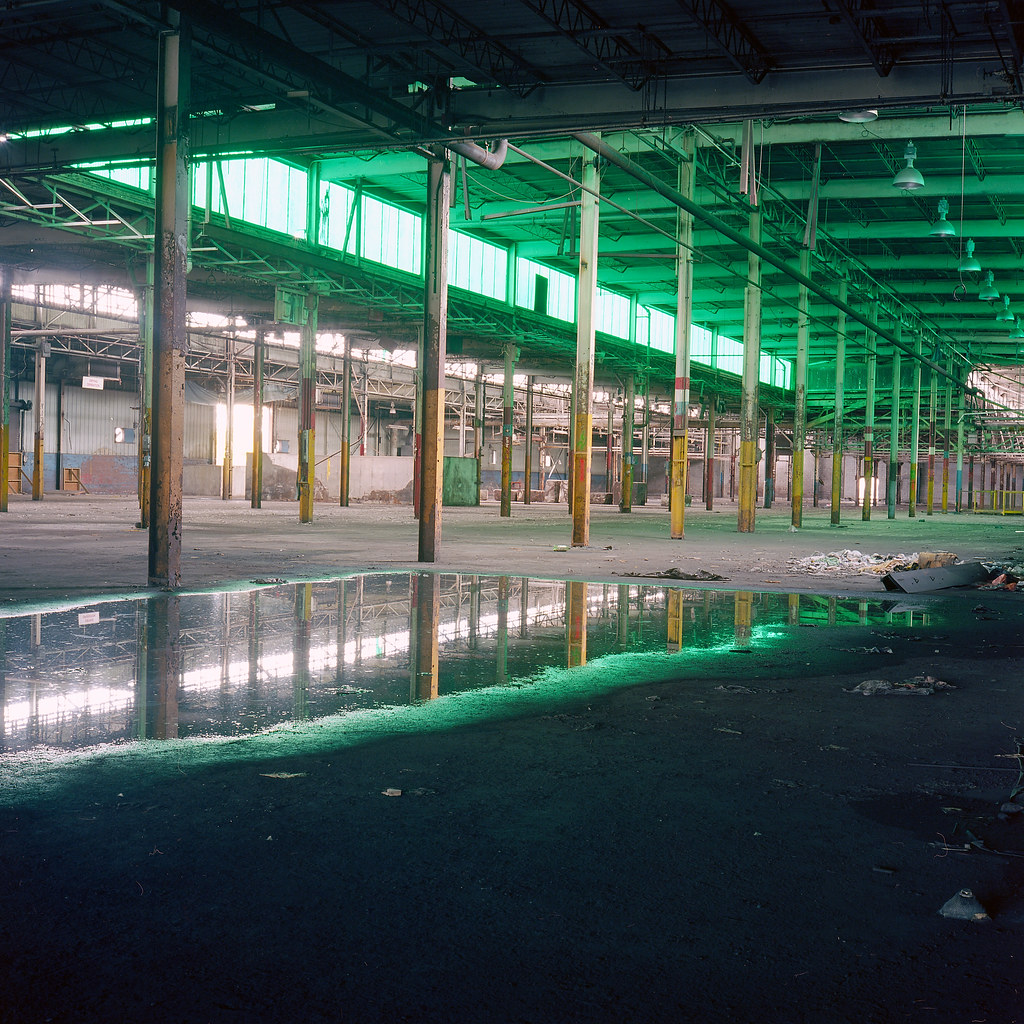
Rolleiflex 2.8F – Carl Zeiss Planar 80mm 1:2.8 – Kodak Ektar 100 @ ASA-100 – Processing By: Silvano’s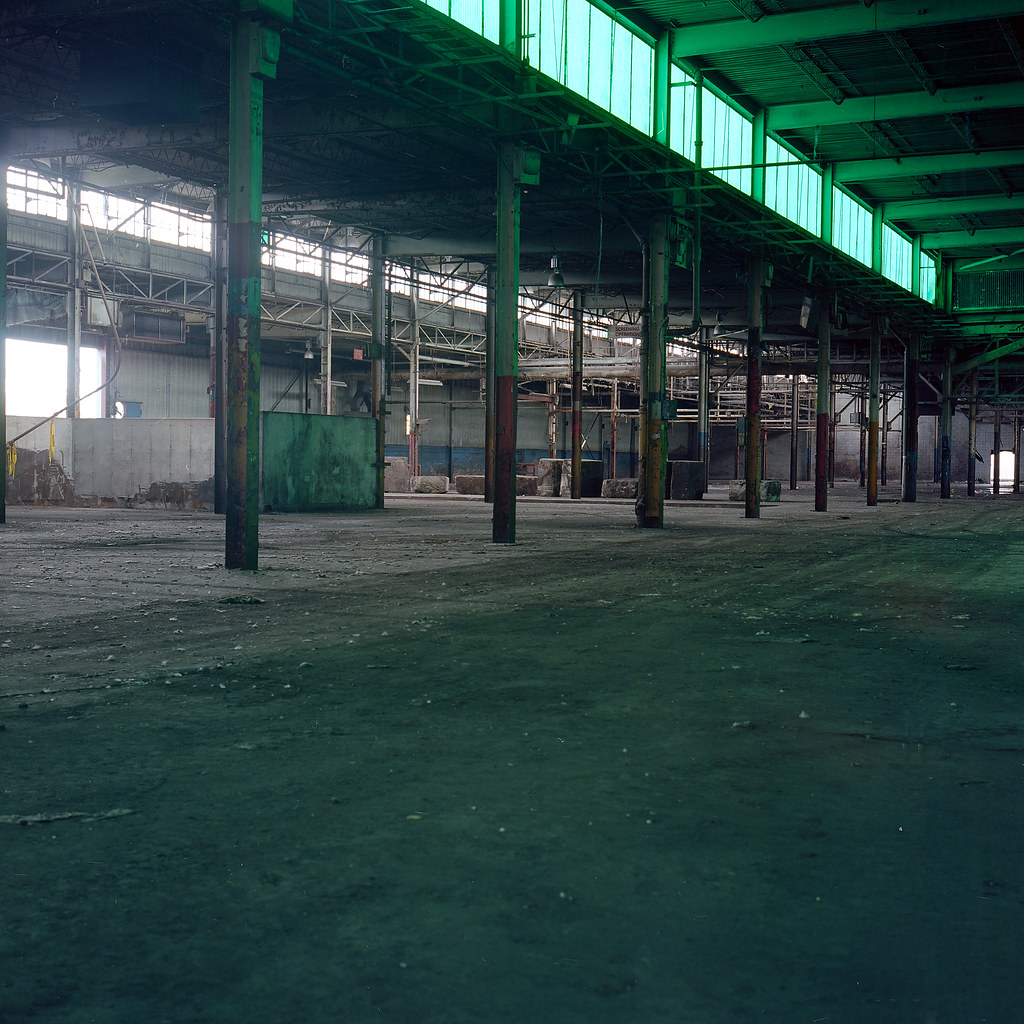
Rolleiflex 2.8F – Carl Zeiss Planar 80mm 1:2.8 – Kodak Ektar 100 @ ASA-100 – Processing By: Silvano’s
Rolleiflex 2.8F – Carl Zeiss Planar 80mm 1:2.8 – Kodak Ektar 100 @ ASA-100 – Processing By: Silvano’s
The Hamilton plant underwent extensive modernisation through the 1960s and even the installation of IBM mainframes and industrial computers to streamline and improve the production process. Firestone Canada also expanded with new plants being opened across the country. It was probably at this point that many of the early 20th century expansions were torn away in favour of modern buildings. For the workforce, a brand new locker room facility was completed. By 1970, Hamilton could produce one thousand types of tires and maintained a workforce of 1,800. A company-wide strike in 1974 resulted in the entire workforce in Hamilton walking off the job for nine months; fellow employees in Canada and the USA also walked off the job but returned the summer of that year. While their demands were eventually met, the entire automotive industry took a significant blow in the decade. Firestone Canada began to shut down plants and facilities across Canada in the second half of the decade. The 1980s were no better, with the parent company in trouble and a major recall that directly affected the only tire produced by Hamilton (the sole product), which would put the writing on the wall. The Provincial and Federal Governments offered up funds to Firestone Canada to retool the Hamilton Plant in 1982. The equipment was pulled out while the money was coming in. Local Hamilton MP Kim Campbell discovered this little behind-the-back happening. In 1986, the entire workforce punched out for the last time, and the plant shuttered; the plant’s closure came too late to be helped by the sale of Firestone to the Japanese tire firm Bridgestone in 1988. By then, the Hamilton Plant had been sold to Toronto Real Estate firm Phillip Enterprises. Phillip Enterprises did promise to use the plant to produce tires and hire back some of the workforce, but those plans have yet to materialise. Instead, the massive facility was mainly used for storage purposes. In 1991, Third Sector Recycling leased the southern sections to operate the new municipal recycling program, which, in 2001, the City of Hamilton took over and bought the entire property lock, stock and barrel. In 2008, the modern sections were separated from the surviving sections of the original plant. By the end of the decade, the site had been gaining attention. The City approved the plant’s demolition in 2010, and work commenced a year later. By 2012, the entire plant was utterly demolished, save the areas used for the recycling faculties.

Nikon D300 – AF-S Nikkor 14-24mm 1:2.8G
Nikon D300 – AF-S Nikkor 14-24mm 1:2.8G
Nikon D300 – AF-S Nikkor 14-24mm 1:2.8G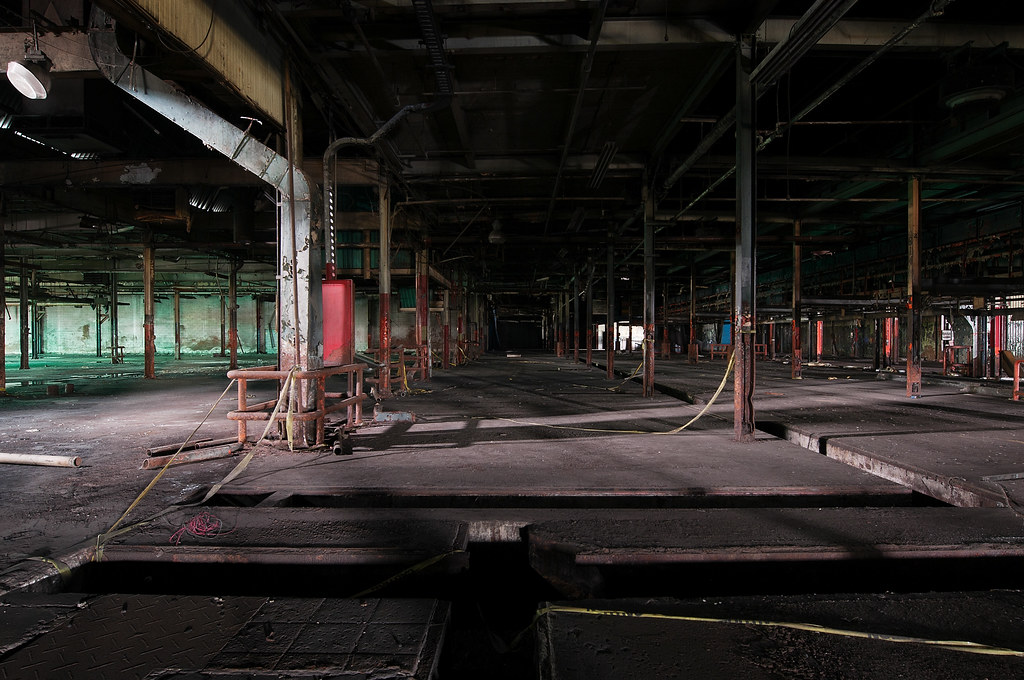
Nikon D300 – AF-S Nikkor 14-24mm 1:2.8G
Nikon D300 – AF-S Nikkor 14-24mm 1:2.8G
Some of my best experiences exploring Hamilton came from Firestone. As I mentioned in the opening paragraph, the first trip into the property for the boiler house occurred in December 2006. While the locals kept the actual name of the place secret, I think the locals knew exactly where we were going. Taking the group to the boiler house was the right move; it was packed with equipment and documents with lots to see and browse. But it was a relatively small place. The biggest draw the following month was the main plant; the downside was that in 2007, the old plant and the active recycling facility were still connected. On that trip, we encountered our first security guard; the guards had learned of our little meetup and wanted to let us know not to go next door and that the police were waiting in case we crossed the property line. They also asked us how our meeting was going and wished us a good night. And true to their word, we never encountered difficulties with them or the police. Once the active and abandoned sections were separated in 2008, we got our first view of the surviving section of the original plant. While the entire factory has changed over the years, you can see that the image I have of the plant from 1924 is far different from a photo I found on Facebook (below). After the plant itself was cracked, it was only a matter of time before we started to seek out more spaces inside, the biggest draw was the basement. The trouble with the basement is that it was flooded, at least until 2008 when most of the basement was pumped out for inspection. So into the basement we went, big Wellington boots with the water almost up to the tops it made me wish I had found some hip waders. I never attended but there was even a skating party down there later in the winter.
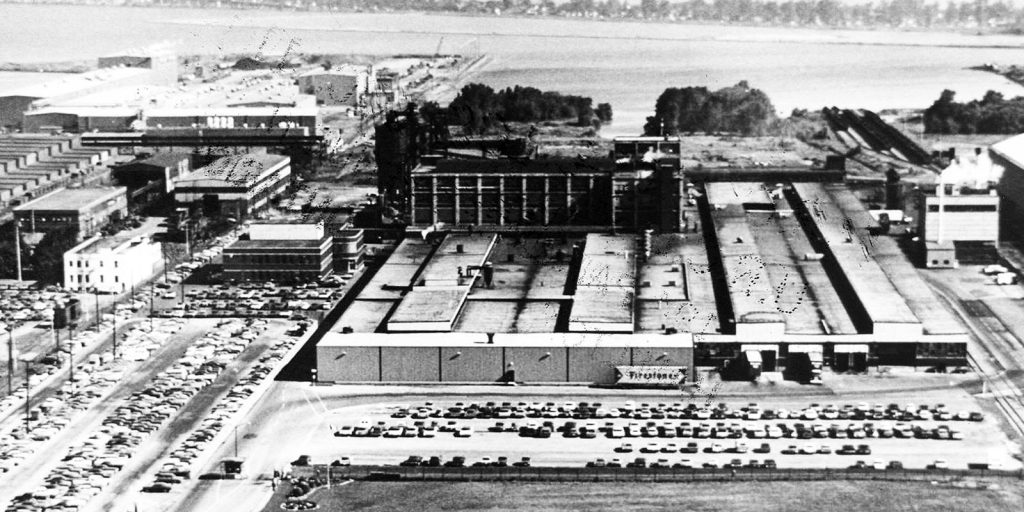
Given the location of Firestone, nighttime exploring was the game’s name for a few years until the entire place became far more porous. It was still one to visit on the weekends. But daytime trips became the norm, and here is where I started to thrive at Firestone and take more solo trips. The one thing that Firestone offered me was the big empty; I began to enjoy the wide open spaces provided, plus the fantastic views from the roof. As abandoned buildings went, Firestone was not without risks but was pretty safe. When I learned that demolition was going forward (primarily because of the number of explorers going in and out of the place), I took a couple of final trips to the plant as solo trips. The first was routine; we parked further away and hiked in, using the parked rail cars as cover. The second trip was my fault; not only had I left my flashlight behind in the boiler house, but someone had pointed out a wealth of historical documentation that had been uncovered in a formerly locked filing cabinet. So, I went back to Hamilton on a Sunday afternoon. I slipped onto the property, parking a little closer than I should have, and entered the boiler house. I quickly found my misplaced flashlight, found the documents, secured them in a bag, and returned. While I was using the railcars as cover, I heard loud voices, so not explorers. I froze, and the voices stopped. Knowing I was still on private property but close to the exit, I ducked under the railcars and crawled out. Sure enough, when I returned to my car and drove past the site, a couple of cruisers were nearby; I got lucky.
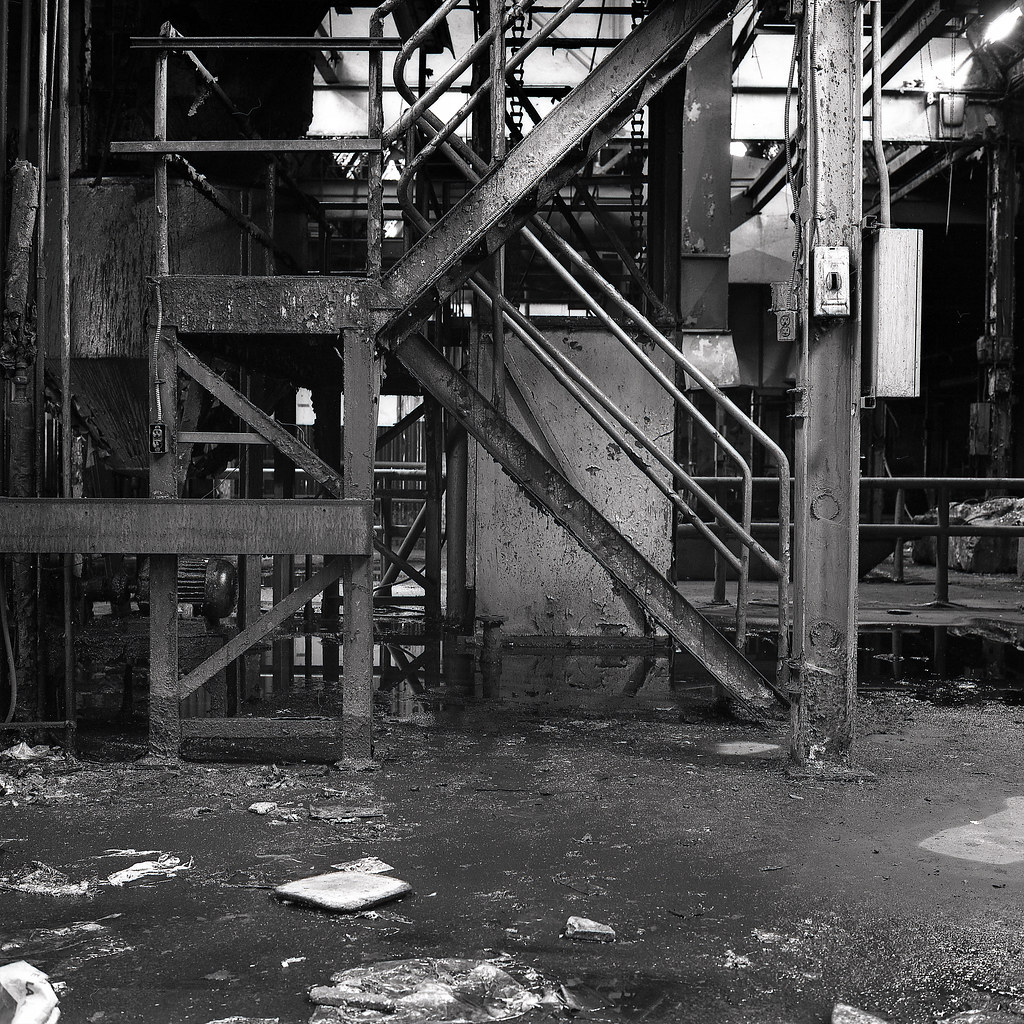
Rolleiflex 2.8F – Carl Zeiss Planar 80mm 1:2.8 – Adox CHS 50 @ ASA-50 – Processing By: Silvano’s
Rolleiflex 2.8F – Carl Zeiss Planar 80mm 1:2.8 – Adox CHS 50 @ ASA-50 – Processing By: Silvano’s
Rolleiflex 2.8F – Carl Zeiss Planar 80mm 1:2.8 – Adox CHS 50 @ ASA-50 – Processing By: Silvano’s
Rolleiflex 2.8F – Carl Zeiss Planar 80mm 1:2.8 – Adox CHS 50 @ ASA-50 – Processing By: Silvano’s
Rolleiflex 2.8F – Carl Zeiss Planar 80mm 1:2.8 – Adox CHS 50 @ ASA-50 – Processing By: Silvano’s
I did a lot of photography at Firestone, mainly because it quickly became a go-to spot to escape, especially when I had enough confidence to take solo trips out there. That didn’t mean my first photos here were good, but I had some winners. Firestone is weird because I was partway between the early bridge cameras and the SLR point in my photography. The Panasonic FZ-7 saw less use than the DiMAGE Z2 in the exploring realm. By the time we were checking out the actual plant, I was using the D70s, although, on that first trip, I only shot film through my F80. In fact, I shot a lot more film at Firestone than at other early locations, shooting Super XP2, Fuji Provia and Velvia and then eventually Ektar and Adox CHS 50 (Efke 50). Experimental is how I would describe my photographic journey at Firestone. I was trying out new things in familiar areas, and I can undoubtedly track changes in my style and abilities with the camera by looking back at the images from the space. The best thing to happen here was using the Rolleiflex, figuring out how to best use the square format in these large spaces and getting the best composition in such a restrictive format.

Nikon D300 – AF-S Nikkor 14-24mm 1:2.8G
Nikon D300 – AF-S Nikkor 14-24mm 1:2.8G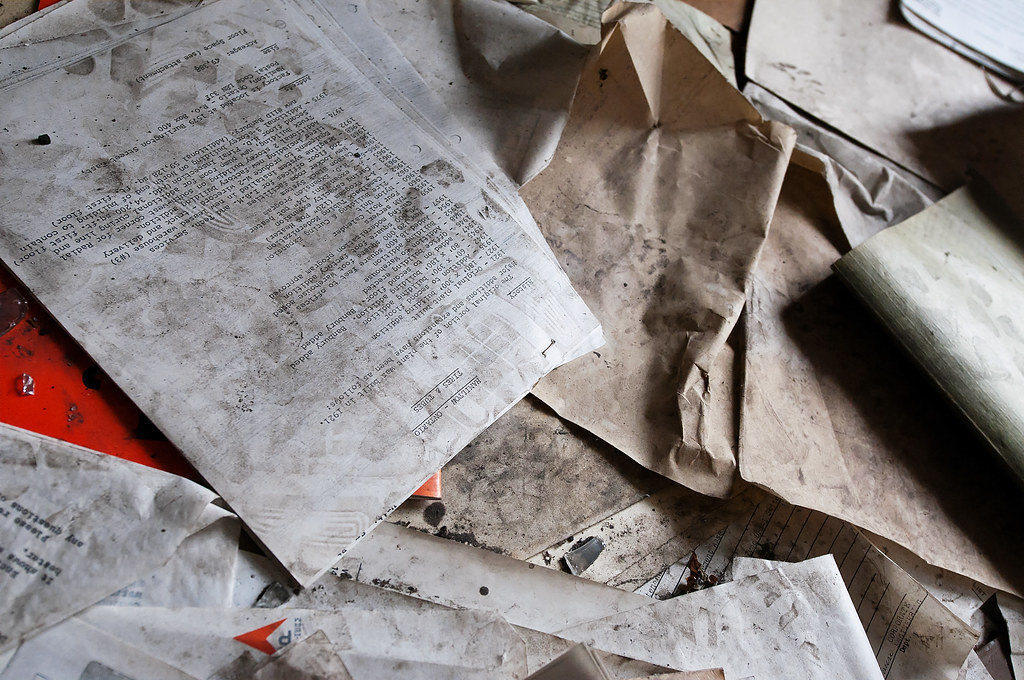
Nikon D300 – AF-S Nikkor 14-24mm 1:2.8G
Nikon D300 – AF-S Nikkor 14-24mm 1:2.8G
Nikon D300 – AF-S Nikkor 14-24mm 1:2.8G
If there was one location I mourned the loss of, it was Firestone. While Hamilton had a wealth of abandoned buildings, many of the city’s highlights have been renovated and restored, and some were lost. But Firestone was a place I enjoyed visiting multiple times; I could quickly drive out on a Saturday, hit it up for a couple of hours, and then head home without too much trouble. On almost every trip, I would find a new section or photograph I had yet to see or take. And with the size of the place, it was easy to stay away from other people, especially if they were not part of the group I was with or even when solo. You can see all my images from my earliest trip to Firestone to my final trip before demolition got started over on Flickr.
some great shots of Firestone here Alex. Nice to see the ‘old place’ one more time
Thanks! Yes, these pieces are great trips down memory lane for me. I have lots of my favourite spots lined up for the rest of the year and enough content lined up until 2027!
Alex, in this and in many of your other posts, I love the way that you present your photography with the story behind your images. It’s an inspiration for me to do the same with my own work.
Hello,
I’m not sure you can help with this inquiry to help me complete a family history, but I’m trying to find information on a former Firestone employee who worked at the Hamilton Firestone plant. His name is as Dave Patterson. He passed away I’m guessing sometime between 1968-1980 but I’m not sure about the date of his passing. I’ve been unable to find any info on his date of birth or date of his death. If there is any help or direction you can give me I would very much ch appreciate it. Mr Patterson was a very dear friend to our family when we arrived in Canada in 1947.
Sadly I’m not able to help you, however you might want to reach out to The Workers Arts & Heritage Centre in Hamilton, https://www.workerscity.ca/about